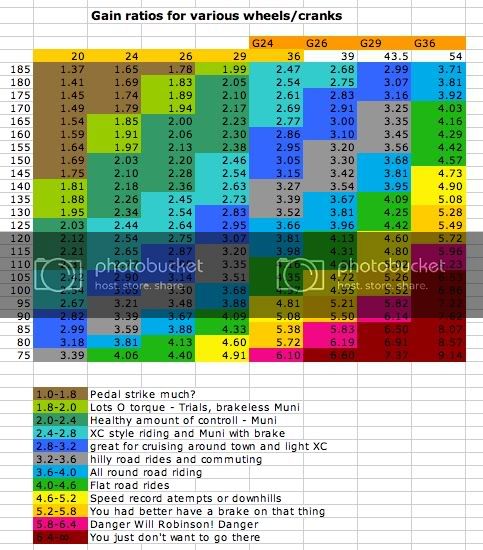I did up a spreadsheet and colored in the similar values for easier visualization of similar gain ratios. The comments at the bottom are just what I think the various ratios would be suited for. The chart also demonstrates the jump in wheel sizes between 29 and 36. I wonder if that gap will ever get filled?
I used nominal values for the wheel sizes and a gearing ratio of 1.5 for the geared numbers but it should be good enough to give people a good idea of what kind of gain ratio they have in various setups.
